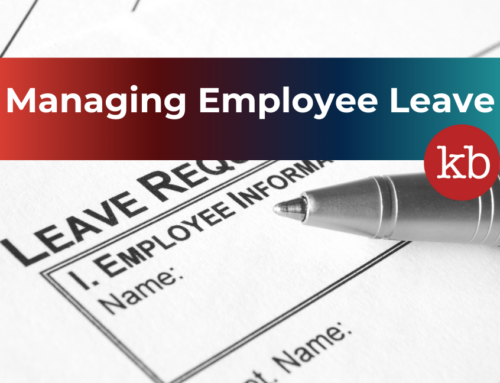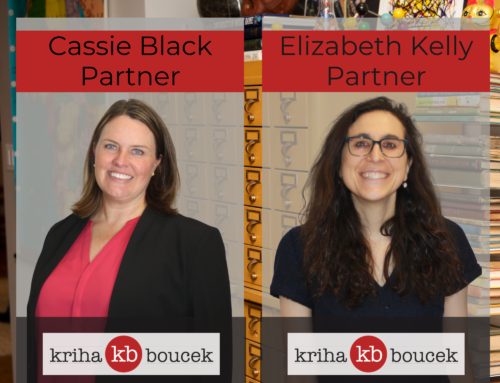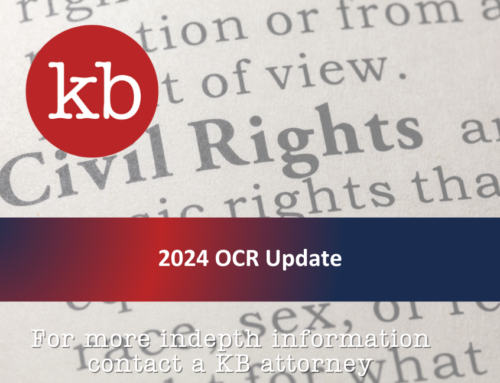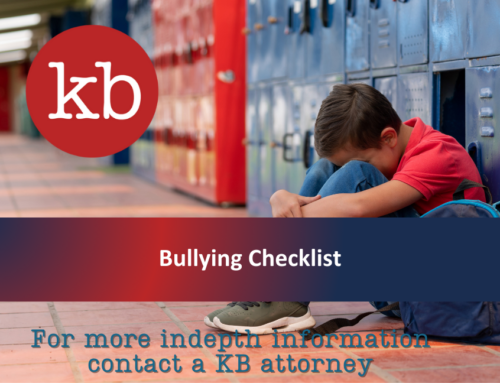On February 8th, TRS issued a communication regarding the new TRS Supplemental Savings Plan (SSP). The communication included an Employer Participating Agreement for Districts to approve, as well as a proposed Board Resolution for approving a District’s participation in the SSP. Additionally, in its February 2021 Employer Bulletin, TRS instructed employers that “This agreement must be formally adopted by each employer …” with a deadline of March 31, 2021. Understandably, this demand for action led to a lot of questions.
Since sending out this information, however, TRS has issued an updated February 2021 Employer Bulletin. The updated Bulletin includes an FAQ with details on what the SSP is and the role Districts will play in administering the optional benefit. Importantly, the FAQ also scaled back language regarding a district’s obligation to enter into the Participation Agreement – moving away from “must” and more towards “may.” That being said, questions still linger on what Districts are required to do with respect to this new TRS SSP and what the impact of entering into the Agreement may be.
What is the TRS Supplemental Savings Plan? Where Did it Come From?
In 2018, the Illinois General Assembly passed Public Law 100-0769, amending the Pension Code to include an “optional defined contribution benefit” for TRS members. See P.L. 100-0769. The new provision directed TRS to “offer a defined contribution benefit to active members of the [TRS retirement system],” (40 ILCS 5/16-204) intended to offer teachers “a high quality vehicle to supplement their retirement savings.” IL. H.R. Trans., 2018 Reg. Leg. Sess. No. 125 (Ill.2018). The intent of the new provision was to move away from the 403(b) plans many school districts were offering employees and that largely differ from district-to-district and to instead provide “one uniform, high quality, low cost plan that teachers can rely on…” Id.
Since the new obligation was enacted, TRS developed 457(b) Plan to offer members and updated its internal accounting system to administer the new Plan. In October 2019, TRS formally adopted the TRS SSP. The Plan was then amended in October 2020. Plan details can be found here. Further, information on the new TRS reporting rules resulting from the added SSP benefit (Jan. 2021 updated) can be found here.
Are Districts Legally Mandated to Enter this Agreement and Pass this Resolution?
Likely, no. Nothing in the statute places an affirmative obligation on school districts to offer this benefit to its employees. The obligation to offer an optional defined contribution plan was delegated strictly to TRS (the “System”). Under the statute, TRS – not individual employers – is required to do the following:
- Offer an optional defined contribution benefit option to active TRS members who choose to participate,
- Create and maintain the benefit in full compliance with State and federal laws and using generally acceptable practices,
- Produce an annual report on participation and the benefit,
- Make the annual report public.
The statute, however, does state that this plan shall be an optional benefit to any member who chooses to participate. Thus, TRS must find a way to make the plan available to all of its members who wish to participate. To meet this obligation, TRS has asked Districts to help administer the Plan by agreeing to the SSP Employer Participation Agreements, thereby, making the optional defined contribution plan available to eligible a district’s employees.
Likely, this was done for operational purposes. Since districts are already responsible for reporting and distributing funds to TRS on behalf of members, the easiest way for TRS to administer the new, optional Plan is to have districts agree to now take on these same responsibilities for both the defined benefit plan and the defined contribution.
Thus, to the question of “must a district approve this resolution” – the answer is likely no. In fact, TRS seems to acknowledge this in its updated Bulletin FAQ, stating that it “urges each employer to formally approve the SSP Employer Participation Agreement,” and that “[w]hen considering the participation agreement, employers are encouraged to review the SSP Plan Document and consult their own legal counsel.” Notably, this new language is far softer than the “must” initially communicated to TRS-employers back in early February.
That being said, TRS is required to offer this option to all of its members and members must be given the opportunity to enroll in the Plan. Ultimately, TRS likely needs districts to agree to participate in order to meet these legal mandates.
What is a District Agreeing to if it Approves the SSP Employer Participation Agreement?
The SSP Employer Participation Agreement outlines the responsibilities districts will have in administering the Plan. Included in this list of responsibilities are:
- Determining and monitoring employee eligibility under the Plan,
- Entering salary reduction agreements with employees,
- Timely remitting contributions to the Plan,
- Monitoring employee compliance with contribution limits imposed under the law, and
- In general, complying with the general terms and conditions of an “Employer” under the Plan.
The Plan itself imposes requirements on an “Employer” (i.e., the district). Thus, in agreeing to enter into the Employer Participation Agreement, a district is also agreeing to comply with any stated Employer obligations specified in the Plan itself. Currently, these include the requirements that districts:
- Enter into Salary Reduction Agreements with employees wishing to participate in the Plan,
- Remit employee and, potentially, employer contributions to the Plan, and
- Comply with “… other responsibilities as may be delegated to the Employer by the Administrator.”
Notably, these mirror the “Employer obligations” listed in the Participation Agreement.
What is the Salary Reduction Agreement?
The term “Salary Reduction Agreement” is defined in the Plan to mean an agreement between the district (“employer”) and its employee (the Plan participant) specifying the amount of the employee’s salary he/she wishes to contribute to his/her Plan for each pay-period. The Agreement should specify whether the employee is electing to contribute the funds as a pre-tax contribution or a Roth contribution. Further, the Agreement will be considered irrevocable while it is in-effect. However, employees can submit a new Agreement with the district anytime they wish to revise their contribution.
Are there Liability Risks to Agreeing to Participate?
Likely, yes. Anytime a district agrees to manage funds for its employees or to participate in a formal arrangement – such as the SSP Plan and/or the Participating Employer Agreement – there is a corresponding liability risk that attaches. The scope of that risk is still relatively uncertain and could change over-time, depending on changes that may be made to the Plan or other state and federal laws governing retirement savings plans. One thing to note, like 403(b) plans, 457(b) plans are not subject to IRS non-discrimination testing for employers.
The responsibility of ensuring an employee’s contributions to the Plan do not exceed the yearly contribution limits is the largest liability concern for districts. The Participation Agreement makes clear that, by entering the Agreement, districts will be “solely responsible for monitoring the limit under [the] Plan” to ensure the contributions do not exceed the limits imposed by the IRS. This includes knowing if an employee has additional 457(b) plans that must be included when calculating an employee’s total yearly contributions.
That being said, TRS is the legally mandated Administrator of the Plan and should, therefore, carry the most liability in ensuring the Plan is properly administered and complied with. Districts will largely be responsible for ensuring proper wage deductions are made and submitted to TRS and contribution limits are adhered to.
What if our District Currently Offers a 403(b) Plan?
Districts will not be required to stop offering their 403(b) plans if they agree to the SSP Employer Participation Agreement. Employees may elect to participate in more than one defined contribution plan – including both a 403(b) and a 457(b) plan.
For employees, many of the participation rules for 403(b) and 457(b) plans are similar. One advantage to having both a 403(b) and a 457(b), though, is that an employee will be able to double his or her yearly contributions without running afoul of the annual contribution limits placed on individual accounts. In other words, for 2021, an employee may elect to contribute up to $19,500 to both her 403(b) plan and her 457(b) plan without facing a penalty. Additionally, employees may elect to roll-over their 403(b) plan funds into their 457(b) plan.
Is the District Required to Make an “Employer Contribution” to the Plan?
No. The Plan and the implementing statute make it optional for an employer to provide either a matching contribution or a set employer-contribution, but it does not require employers to do so. That being said, unions may begin asking for this during collective bargaining agreement negotiations.
What Happens if we Decide Not to Agree?
Most likely nothing. However, legislative changes could be on the horizon. As noted above, the law requires TRS to establish this Plan and it requires that the Plan be available for all employees who want to participate. Since, under the current statutory language, TRS likely cannot require districts to agree to participate in the Plan as an “Employer,” there is a logistical problem that clean-up legislation generally will need to fix. Until that occurs, though, it does not appear that a district must agree to the SSP Employer Participation Agreement.






